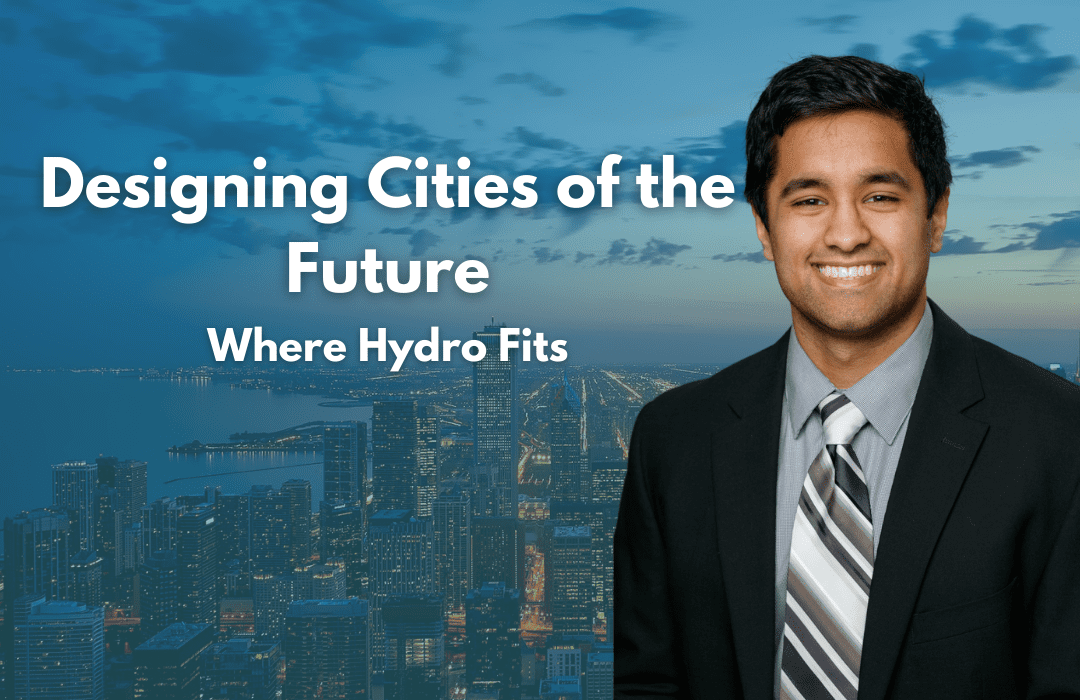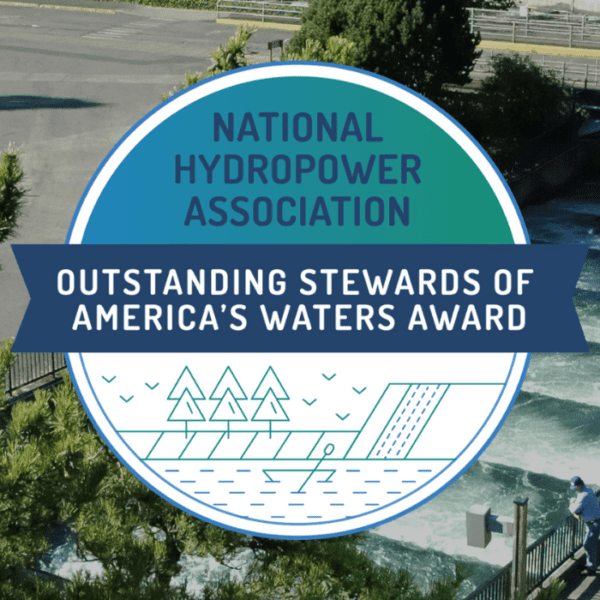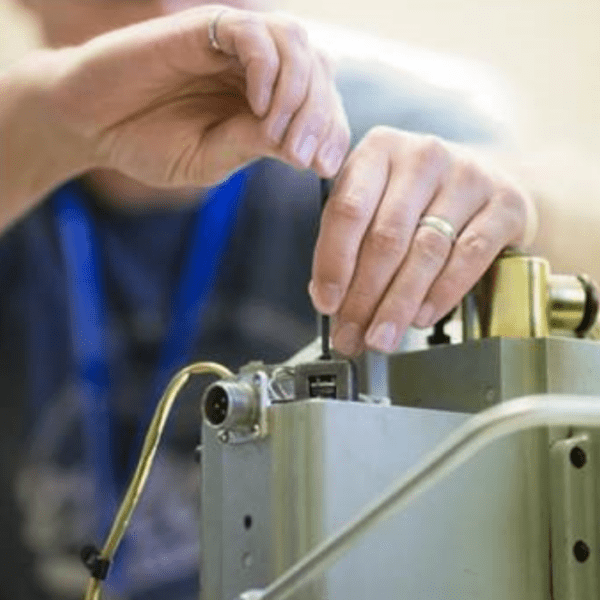Editor’s Note: Colin Sasthav won the Hydropower Foundation’s Hydro Think Tank Unplugged Competition™ , which took place during the 2021 Clean Currents Conference + Tradeshow. POWERHOUSE asked Colin to share details of his winning concept and his views about hydro in general.

One thing I appreciate most about hydropower is that it is inherently inter-disciplinary. Dams and hydropower plants are tightly integrated into the river ecosystem, so to make decisions in this field, you must understand how the electrical, biological, hydraulic, and economic systems interact.
This has led to a hydropower community that is also inter-disciplinary. While experts in the field have their own specialties and perspectives, I think there is a common understanding that hydropower plays an essential role in the clean energy transition and local ecosystems.
As a participant in the student Think Tank competition, I was asked to design the renewable energy city of 2030 that predominantly uses hydropower. Myself and the other student competitors were provided some flow and load profile data and some assumptions about the amenities that must be included in the city. The city had to be fully electrified, meaning public and private transportation had to use electric vehicles, and all heating demands were electrified.
We then had about four weeks to design our city and energy system, conduct any analyses or research to inform the design, and develop a seven-minute pitch to present at Clean Currents.
THE DEEP DIVE – DESIGNING MY CITY
At face value, the problem statement was daunting. There were a lot of unknowns and assumptions, but open-ended problems require creativity, so I broke down the problem into qualitative and quantitative pieces.
The quantitative task required gathering data to represent the demand curve for my city, using the hydropower equation to inform hydropower generation, and using a simulation process to optimize the amounts of wind, solar, and storage resources to meet the remaining load.
The qualitative task is where creativity and inter-disciplinary thinking came into play. Taking the capacity and storage estimates from the quantitative analysis, I had to pick the technologies that best fit the local area and provided additional value to my city. For example, I sited my hydropower plant next to a park so that citizens could fish, swim, and kayak in the area.
My biggest takeaway from the competition was an appreciation of what 1 MW of hydropower can “buy,” meaning how many homes, electric vehicles, and commercial buildings I can power with this capacity.
My final design included a 7.3-MW hydropower plant, which provided the baseload power to my city, along with solar, wind, and energy storage to meet variable demand. These resources were able to support a fully electrified community of 700 people.
My PhD research at the University of Tennessee focuses on the design of small hydropower systems, which are typically under 10 MW, so it was helpful to validate that distributed small hydro can go a long way in meeting the energy and water needs on a community scale. I think that as the electric industry moves toward microgrids, distributed generation, and community-based energy solutions, small hydropower needs to be in that conversation.
MY TAKEAWAYS FROM CLEAN CURRENTS
The student competition also allowed me to attend the first-ever Clean Currents conference + tradeshow that brought together stakeholders across the waterpower industry. Putting faces to the names of people I’ve heard about through research papers and social media was a neat part of the experience. I heard from speakers and saw demonstrations that spanned many topics, from generator design to fish passage to software systems. After being siloed for over a year during COVID, I appreciated the opportunity to assess what is on the minds of people in the industry and how they are addressing the important problems.
My favorite memory of the conference was a panel about the Uncommon Dialogue, a diverse group of stakeholders coming together to discuss challenges facing the hydropower industry. There was subtle and, at times, not so subtle tension between environmental and industry stakeholder groups. Despite this tension, the dialogue was respectful and informative. The fact that the dialogue is happening at all goes to show that everyone in the industry shares a common ground that clean energy and environmental impacts are significant and that we need inter-disciplinary cooperation to solve these challenges.












